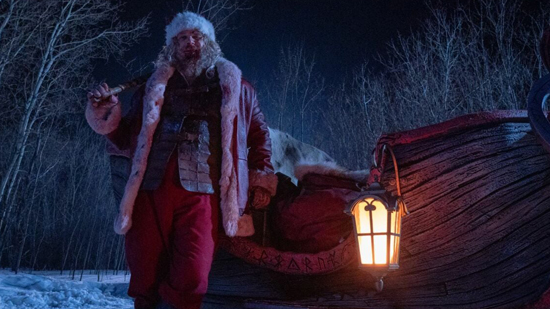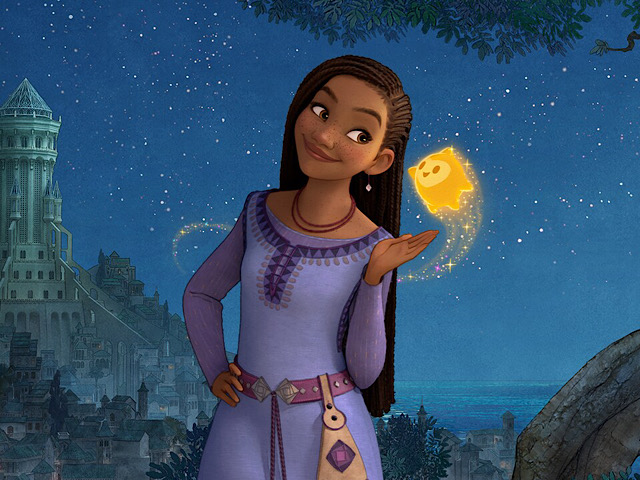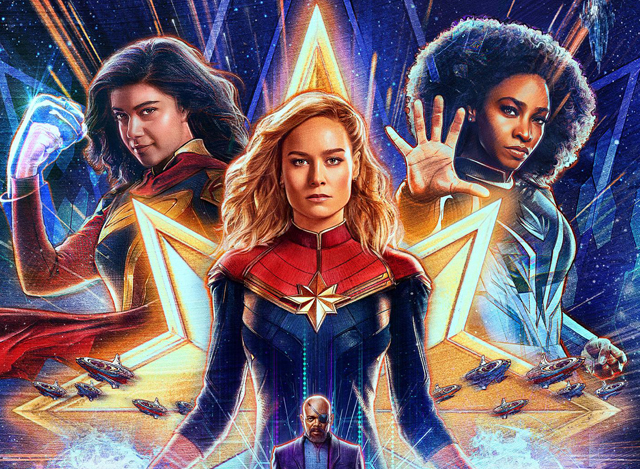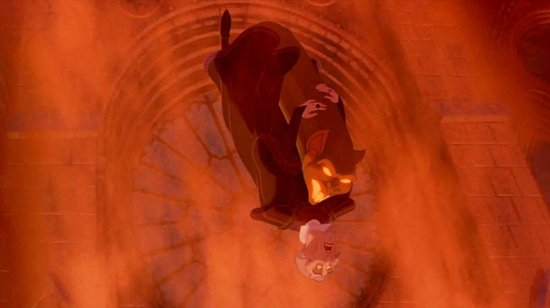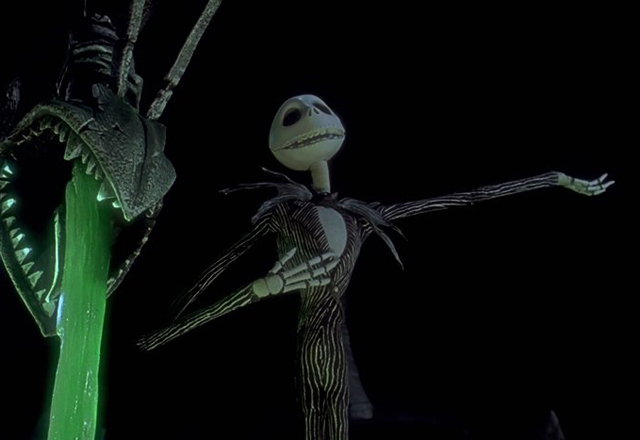
We all know the kinds of Christmas movies we prefer to watch every single year during the holidays. Speaking for myself, I’m partial to Christmas themed comedies, like National Lampoon’s Christmas Vacation (1988) or Home Alone (1990). For others, old classics like Holiday Inn (1942) or It’s a Wonderful Life (1946) are what they prefer, or some like to indulge in the dark side of Christmas with horror themed holiday movies like Krampus (2015). But if there is a particular subgenre that has emerged as the most dominant among Christmas movies, it’s the romantic comedy. Rom Coms are by far the most prominent, and some would say over-represented of genres during the Christmas season. But the reason they are so omnipresent during the holidays makes a lot of sense. No other genre of Christmas themed movies knows their audience better than the rom coms, and the people who make them target that audience with laser like precision. For many people, the holidays is all about family and home based comforts, and that’s what these movies deliver on every single time. Some would complain that the Christmas rom com has become the most cookie cutter of subgenres in all of cinema, because the vast majority of them pretty much recycle the same formula with only minor tweaks to differentiate themselves. But, this is where the appeal lies for many. The predictability of Christmas rom coms can sometimes be it’s asset because it helps them to go down easier for the tastes of it’s audience, many of whom prefer the same and comfortable over the challenging and unexpected. Though many studios have contributed to the vast library of Christmas themed rom coms, there is one producer that not only has cornered the market, but has over time created a huge money making machine based around this genre of film. Of course it makes sense that a company specialized around warming peoples hearts through greeting cards over the last century would also do the same on the small screen as well.
The Christmas card maker Hallmark has spun off into many different branches of holiday themed merchandise over the years, which includes gift wrapping and tree ornaments on top of their base production of greeting cards. In the 1990’s, they began their first steps towards a whole different avenue of business, which was entertainment. Since the 50’s, Hallmark had lent it’s branding towards film and television productions under the banner of “Hallmark Hall of Fame,” basically using it’s wholesome name to steer people towards media that shared the values the company wished to promote. In 1991, Hallmark formally created Crown Media Inc., which would be the official media wing of the Hallmark corporation. From this point on, Hallmark would be in the business of not just giving their name to other people’s productions, but would be in charge of making their own. Over the 1990’s, Hallmark would co-produce several made for TV specials, films, and mini-series. One of their favorite partners to work with was the Jim Henson company, whom they collaborated with on the ambitious mini-series Gulliver’s Travels (1996) for the NBC network. The partnership with the Jim Henson company led to the next big extension of their media empire, as the two companies acquired major stakes in the faith based cable channel called the Odyssey Network. Eventually, the duo of shareholders re-organized the network, creating more secular programming and reducing the religious content to a minimum four hour block. Finally in 2001, the Odyssey Network was officially re-branded as the Hallmark Channel, which would be the official home of all past and future Hallmark branded programming. The channel proved to be an enormous success and the network has grown since then with Hallmark Movies and Mysteries being spun off in 2004 and Hallmark Drama launching in 2017.
Of course Hallmark Channel carries a variety of programming throughout the entire year, but it’s the holiday season where the channel really sees a spike in viewership, and they are quite aware of that fact. Christmas time is Hallmark’s bread and butter, so it’s only natural that they would go all out for the holiday season. The network premiered it’s first original Christmas themed movie during it’s inaugural year with The Christmas Secret (2001), starring Beau Bridges and Richard Thomas. In the 22 years since, the Hallmark Christmas movie library has grown to nearly 500 titles. That’s an average of 20 new movies a year, and we’re only talking about the Christmas ones Hallmark releases. To say that Hallmark Entertainment has been prolific over these last several years would be an understatement. But, it’s not particularly surprising either. Hallmark Christmas movies are not expensive to make, and they usually run a breezy 90 minutes in length (2 hours with commercials). They don’t require extensive post-production, as most of their films are grounded, with the only magical films falling into a modest magical reality. In many ways, the Hallmark Christmas movie machine runs much like the way old Hollywood did in the studio system days, including the fact that they usually draw from the same stable of actors and actresses for many of their movies. Some would say that Hallmark Christmas movies is the last resort of has-beens churned out by the Hollywood machine, but there are a fair amount of actors who have willingly pursued being a part of the Hallmark Channel stable of stars, and they have managed to thrive on that platform as Hallmark’s popularity has grown. The current queen of the Hallmark Channel is former Mean Girls and Party of Five star Lacey Chabert, whose been the star of over 30 Hallmark Christmas movies as of 2023. And by starring in, I don’t mean any small part; she is the leading lady of that many films, something that you don’t normally see in Hollywood over that short amount of time. The movies may all be the same re-packaged fare re-released ad nauseum, but Hallmark certainly knows what it’s doing with the business model they’ve set up. Their Christmas programming is now so vast that their entire programming block between late October and the end of December has been dubbed the “Countdown to Christmas,” and it is consistently their highest rated period of the year.
So what makes these Christmas movies so appealing to audiences. For the most part, Hallmark has worked the rom com formula down to a science. For the most part, the movies are centered around a central romance; often between polar opposites. A lot of the time, the central character (mostly the leading lady) is career obsessed and alone during the holiday season, and through a series of holiday centric events, they find true love and live happily ever after. In a Hallmark Christmas movie, it’s the holiday traditions that bring the people closer together. Sometimes it’s through meeting the family of the loved one for the first time during the holidays that does the trick. Sometimes it’s helping that special crush finally achieve success in their Christmas time competition. There’s also quite a few of these movies that end up with one of the fated lovers having to chase down the other to tell them that they love them; most often it’s at an airport, because you know the holidays. Along the way, there’s a colorful cast of side characters, including the sassy co-worker, the warm-hearted mother and father, and the precocious little kid. What I’ve described is pretty much 2/3’s of all the plots of the Hallmark Christmas movies. Even the marketing of the films features very little deviation, because it often shows the two love birds embracing in front of a Christmas tree under a starry sky or in a field with freshly fallen snow. You pretty much know what you are going to get when you tune in to watch a Hallmark Christmas movie. It is not high art cinema, but rather comfort food, and Hallmark is very well aware of the kind of media they are producing. Their movies are more life-affirming than mind-opening and the fact that they continue to make the same kind of movie year after year is because they know that their audience is not expecting any more or less than what they’ve had before, and that’s a formula that is in no need of changing.
The one thing that probably defines Hallmark movies more than anything else is that they propagate the idea of traditional values. Hallmark is by all accounts politically neutral, but their programming does very much stick to a sense of old time ideals. The world of Hallmark Christmas movies is very much an aspirational one; where there is no violence or vulgarity, and everyone is polite to one another. There is definitely a sense of competing values in Hallmark movies, but it often cuts down the line of complicated lifestyles versus the simple joys. Often the countryside is portrayed as the idealized place to be, where time moves more slowly and the worries are millions of miles away. There are people out there who point to this aspect of the Hallmark movies as being agenda driven. Given that the Hallmark Channel started off as a Christian based network before it’s re-branding, it can be expected that some of the residual religious influence carried over into Hallmark’s mostly idealized worldview. The romances in Hallmark movies are extremely chaste compared to most other rom coms. For many years, it would’ve been even unusual to see a kiss longer than a few seconds in most Hallmark movies. Though Hallmark Channel movies are for the most part extremely tame in general, they are also at the same time not pushing any particular agenda other than just wholesome Christmas tidings. I think the critique of containing an agenda stems from the fact that religious propaganda over the years have in many ways been co-opting the Hallmark style, seeing it as an effective tool to spread their more overt agendas to the same kind of audience that watches Hallmark films every Christmas. Hallmark for it’s part has tried to avoid dipping it’s toes into the culture war, hoping to appeal to all audiences with it’s simple greeting card messaging of hope and love. But, unfortunately, their idealized sense of the world doesn’t always mix well in an environment that has grown more polarized.
There have been a variety of controversies that have arisen over the years with regards to Hallmark’s place in the so-called “culture war.” In 2020, Hallmark found itself in the cross-hairs of right wing critics who protested an ad run on the channel by the wedding planning app Zola, which featured testimony from a same-sex couple who used it’s services. The backlash prompted an immediate pull from the airways by Crown Media’s then CEO Bill Abbott. The censoring of the ad then led to a counter protest from the LGBTQ community, who also made a point of the lack of representation on the Hallmark Channel. This led to a quick reversal by the Hallmark Corporation, who stated that their aim was not to offend anyone by either airing the ad or pulling it from the air. Despite their best efforts to avoid getting into the political conversation, Hallmark was unfortunately now right in the thick of it. Given the fact that the year 2020 forced many new conversations to open up about diversity and representation in general, Hallmark began to listen to the complaint that their programming was lacking in representation across the spectrum, especially with people of color as well as the LGBTQ community. Unfortunately, the head of Hallmark’s media division, the ultra-conservative Bill Abbott was not receptive to these changes he called upon now had to enact, so he promptly resigned after a decade in charge of the Hallmark Channel and it’s subsidiaries. In the following year, he launched the new network Great American Country (GAC) which would now be the right-leaning alternative to the diversified Hallmark Channel. This move then led to a very publicized departure from one of Hallmark’s biggest stars, Candace Cameron Bure, who like Abbott also objected to Hallmark’s move for diversity. The fundamentalist Christian actress (sister of far-right actor and filmmaker Kirk Cameron) signed an exclusive deal with the GAC channel and Hallmark suddenly found itself facing competition not just for it’s wholesome image but for it’s hold on traditional value audiences.
It can definitely be said that while Hallmark wasn’t political in itself as a broadcaster, it’s audience nevertheless was made up of primarily right-leaning baby boomer generation viewers. It was the premiere channel for middle aged to elderly women across America, many of whom gravitated to Hallmark’s simpler, idealized view of American life. But, there is another block of audience members that has been growing over the years for the Hallmark Channel. Believe it or not, the Hallmark Channel, and in particular their Christmas movies, are very popular in the gay community. Of course, these two blocks of audiences are watching Hallmark movies for different reasons; the older audiences for the affirmational traditional values espoused by the films, and the gay audiences for the camp value. But that’s a generally nice thing to think that conservative mothers and their queer children can have something to bond over during the holiday season as they watch the Hallmark Channel together. Thankfully, this is something that the Hallmark Channel has embraced in the last couple of years. After Bill Abbott’s departure, Hallmark has held true to it’s promise to expand representation on it’s network. While Hallmark movies remain fairly chaste with their romances, there is a decidedly stronger mix of color amongst the couples, including far more interracial relationships. Actress Holly Robinson Peete has emerged as one of the top stars on the channel in the last couple of years, marking a strong presence for people of color on the channel. But, the biggest sign of Hallmark’s progression into a more inclusive studio was in Christmas 2020 with the premiere of the movie The Christmas House, the first Hallmark movie to feature a same-sex couple prominently in it’s story. While performers of color and different sexual orientations were always a part of Hallmark movies in the past, they were now being allowed to take center stage and have their own stories told by the same studio that had shepherded their careers for so long. And the last couple of years have shown us that embracing diversity has not hurt Hallmark one bit. In fact, their influence on the holiday season has only grown over time.
The Hallmark Christmas movie model has expanded beyond just Hallmark’s reach. You now can find the same kind of wholesome holiday entertainment premiering on streaming platforms like Netflix and Amazon each year. There are literally hundreds of new Christmas rom coms to choose from each holiday season, and this is largely due to the fact that Hallmark’s formula has been such an effective one. They are not expensive to make and they already have a reliable, built in audience to capitalize on. Hallmark itself has taken advantage of the rise in streaming with an exclusive deal struck with Peacock. Hallmark also has it’s own VOD service where people can purchase their movies directly through their app. Despite the controversies that caused an uproar in the Studio City production offices a couple of years ago, Hallmark is finding that change is good for business. Sure they lost a big name talent like Candace Cameron Bure, who was the face of Hallmark through most of it’s formative years in the 2010’s, but as we’ve seen there are many other talented actresses waiting in the wings ready to take the spotlight at Hallmark that don’t share her toxic aversion to diversity. It’s also pleasing to see that longtime queer stars from many past Hallmark movies, like Luke MacFarlane and Jonathan Bennett, no longer have to remain in the closet on screen and are now able to be romantic on film truer to their own experiences. Hallmark Christmas movies are certainly not for everyone; I myself tend to steer way clear of them. But, despite their simple, cliched nature, the Hallmark Christmas movie experience definitely delivers for the audience that it appeals to. What is pleasing to see is that Hallmark is growing bolder over time with how they approach growing their audience. They rightfully recognize that their films should be more representative of the way that America looks today, which is not something that should ever been dismissed as “political.” The reason I think a channel like Hallmark has a brighter future than a more agenda driven one like GAC is because they see that the broadest audience appeal will be the key to long term success. GAC only appeals to a very narrow audience block of fundamental traditionalists, which is not a demographic that organically grows over time. Hallmark knows that appealing to younger, more diverse viewers is the key to their future growth, and they are able to grow that reach without breaking out too much from their tried and true formula. The stories remain the same familiar re-treads, but the players are changing, and for the better. In the end, a Hallmark Christmas movie is very much the embodiment of that sweet, saccharine poetry that they’ve been putting on a card every Christmas for the last 113 years. They may be manipulative and corny, but on a cold Christmas Day, they can be as comforting as a cup of hot cocoa while resting under a warm blanket by the glow of a twinkling Christmas Tree.





